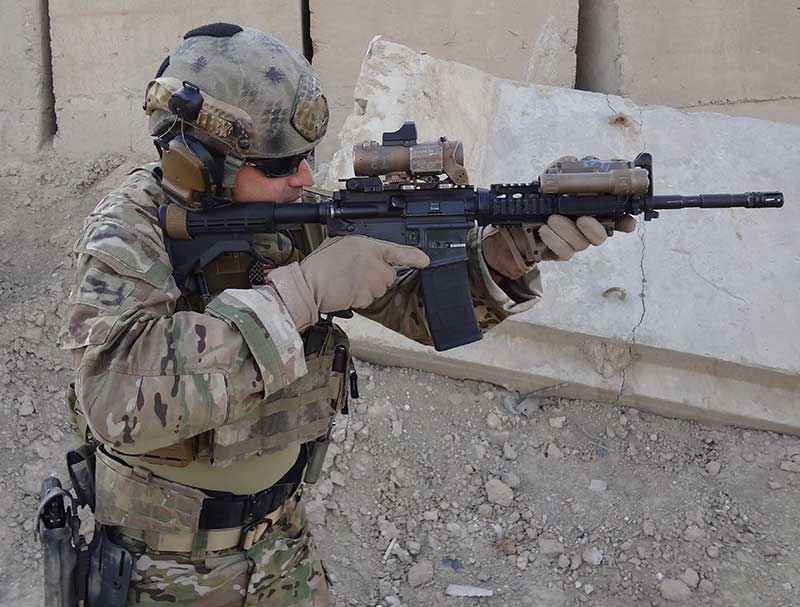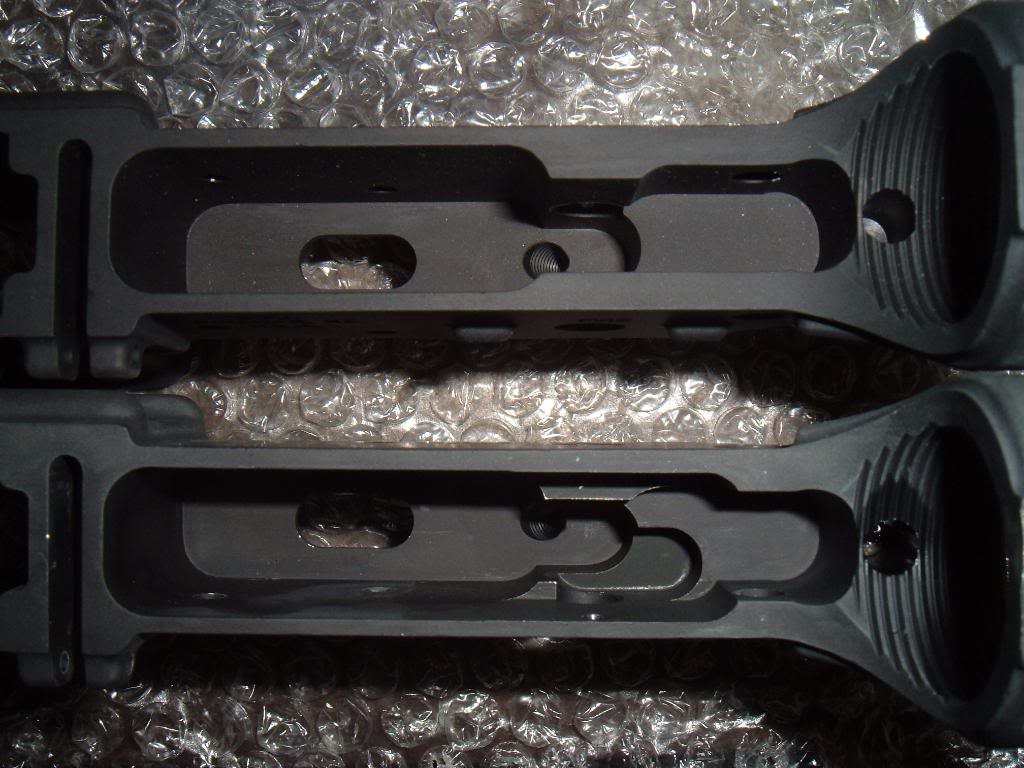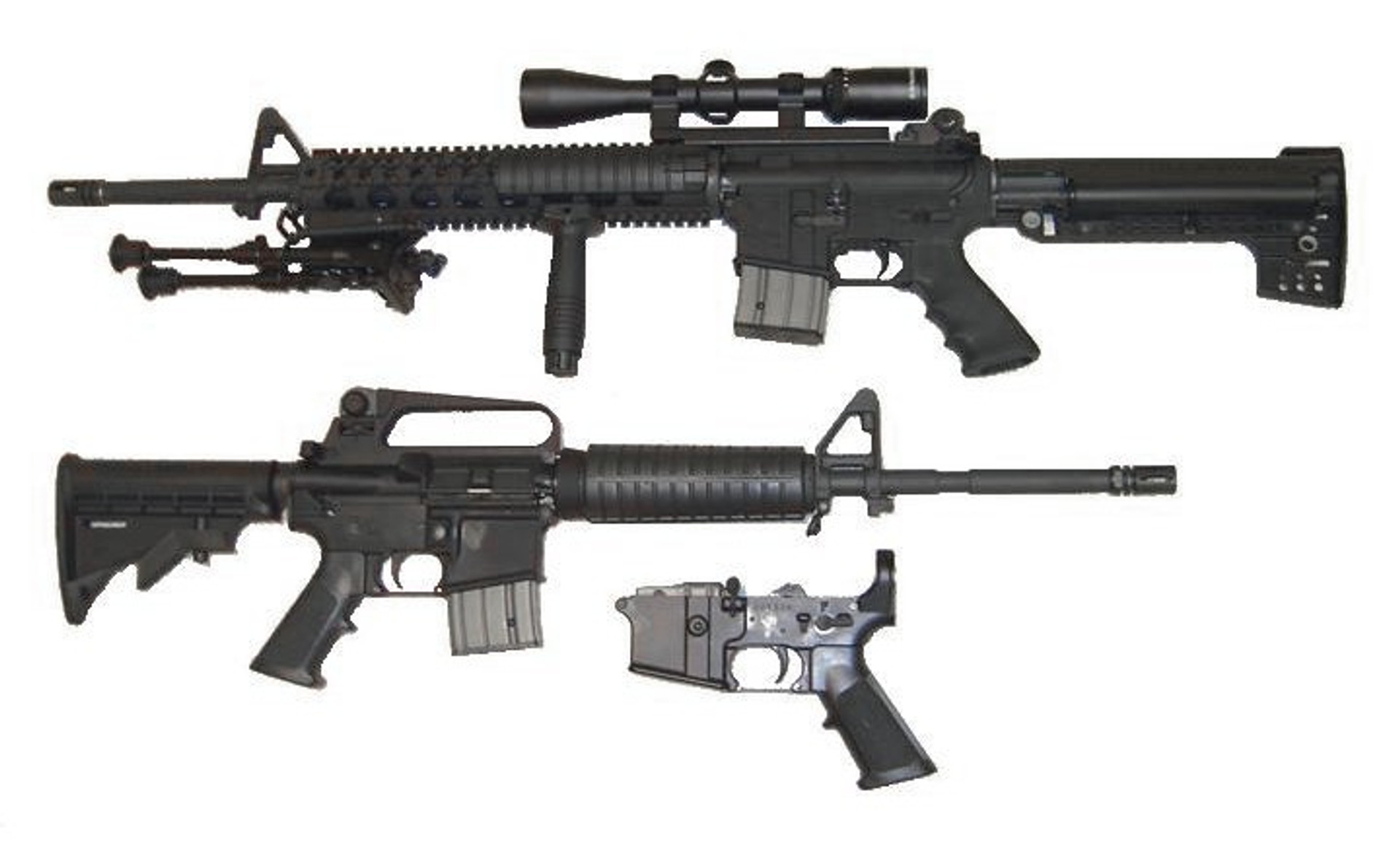AR15 vs M16 vs M4: What’s the Difference?
Besides the civilian and military designations what’s the real difference between the M16 and the AR15? Why separate names for something that is so similar, and which ones can we and can’t we own as civilians?
AR15: History and Designation
The AR-15 traces it’s lineage back to 1956, when Armalite (then based in Costa Mesa, California), and Eugene Stoner designed a lightweight, gas-powered, selective-fire rifle for the United States Military. However, due to financial difficulties (probably related to manufacturing machine guns in California), they made one of the poorest business decision in history, and sold the design to Colt in 1959, as well as the rights to the names AR-15, and AR-10.
Nowadays, the AR-15 is the most popular rifle in America. With an estimated 10,000,000+ in civilian hands, it has earned the well-deserved moniker, “America’s Rifle”. With so many variations available now from the Pistol to SBR, or a service rifle to SPR or hunting variety, the AR-15 has developed into a platform suitable for the every man, and all of their needs. So how exactly does the M-16 differ?
M-16: Development from the AR15

A soldier in Vietnam with the XM16E1, firing fully-automatic, while puffing a cigarette. You will never be this cool.
After Colt won it’s manufacturing contract, the M-16 was first shipped to troops overseas in Vietnam in 1964. While it got off to a rocky start due to magazine issues that were largely blamed on the rifle (although the rifle did have some issues related to an un-chromed chamber at first as well), it has since become one of the most iconic military weapons of all time. WIth four variations in service with the United States Military (yes, there are still rear-echelon units with the M16A1), the rifle has developed over time to suit the constantly advancing and adapting needs of our warfighters overseas.
The most recent adaptation, the M16A4, was finalized in 1997, giving our soldiers the ability to mount optics and accessories to the top rail and handguard, giving them a rifle more adaptable to their environment and fight. The selective fire has varied between Semi/Full Auto, and Semi/Burst throughout the years. However, one thing that has not changed has been it’s size. The M-16 has remained with a 20” barrel from the time of it’s conception, which has become increasingly cumbersome as our wars have largely moved to densely-packed, urban environments.
M4 Carbine: Unique Role and Adoption

An M4A1 in the hands of a United States Army Soldier
Tracing it’s roots to the compact XM177 and the GAU-5 of the Vietnam war, the M4 began development in 1984 and was officially adopted in 1991. Initially offered primarily to Special Operations troops, the M4 (and M4A1) filled the role for a more compact weapon platform for urban environments, and for vehicle crewmembers with less space for a full size rifle.
Moving into the mid-2000s, the M4 was adopted for the entirety of the US Armed Forces. The Marines were the last holdout, but eventually moved towards adopting the M4 as well force wide. But with all these different rifles stemming from the same platform, what’s the difference?
AR15 or M16?

An AR15 Lower Receiver on top, with an M16 lower on bottom. You can see the difference in dimensions
So what’s exactly the difference between the M16 or AR15? There’s a lot of misinformation out there, or just information that has been repeated so often that it’s taken as fact. The easiest way to look at it is this: Every M16 is an AR15, but not all AR15s are an M16.
Many people will tell you that an AR15 is semi-auto only, and the M16 is full-auto. While this may help for differentiating between the two for civilian purposes, this isn’t at all true. The original AR15 (before it picked up a military name) was fully-automatic, as well as plenty since then. And what most people don’t realize, is that the military has also tested semi-automatic M16s as well, which later earned designations as the famed Mk12 Mod 0.
The most noticeable difference is that the civilian AR15 lower receiver does not have the third trigger pin hole for the auto sear above the safety selector. The trigger pocket is also typically milled to different dimensions to prevent the acceptance of an auto-sear as well. However, this is not a rule. Many companies still sell their lowers with M16 trigger pocket dimensions, they are just missing the proverbial "third-hole". Drilling that third hole is what legally changes your AR-15 from a semi-automatic rifle, into an illegal machine gun.
So Which is Right For Me?
Well, let’s go ahead and break this down for you like a fraction. You can own an M16 as a civilian depending on your state laws, however, since there are only so many of them available (none available for civilians after 1986), the price is high. I’m talking $25,000-$30,000 high. That being said, they actually aren’t a bad investment. Prices have doubled in the past 10 years or so, which is currently a lot better return than the stock market.
AR15 Advantages:
- Readily Available
- Just as effective as the M16 for fighting
- Won’t cost you a divorce
M-16 Advantages:
- FULL AUTO BABY
- Flexing on the Poors
Build Your Next AR15 with 80% Arms!
While we can’t sell you an M16, we can absolutely help you build a high-quality rifle with an AR 15 80 lower kit, one of our Build Kits, or Complete Uppers. As the industry leaders in 80% Lowers and Jigs, we have everything you need to start your next AR-15 build in the comfort of your own home.



 Back to List
Back to List